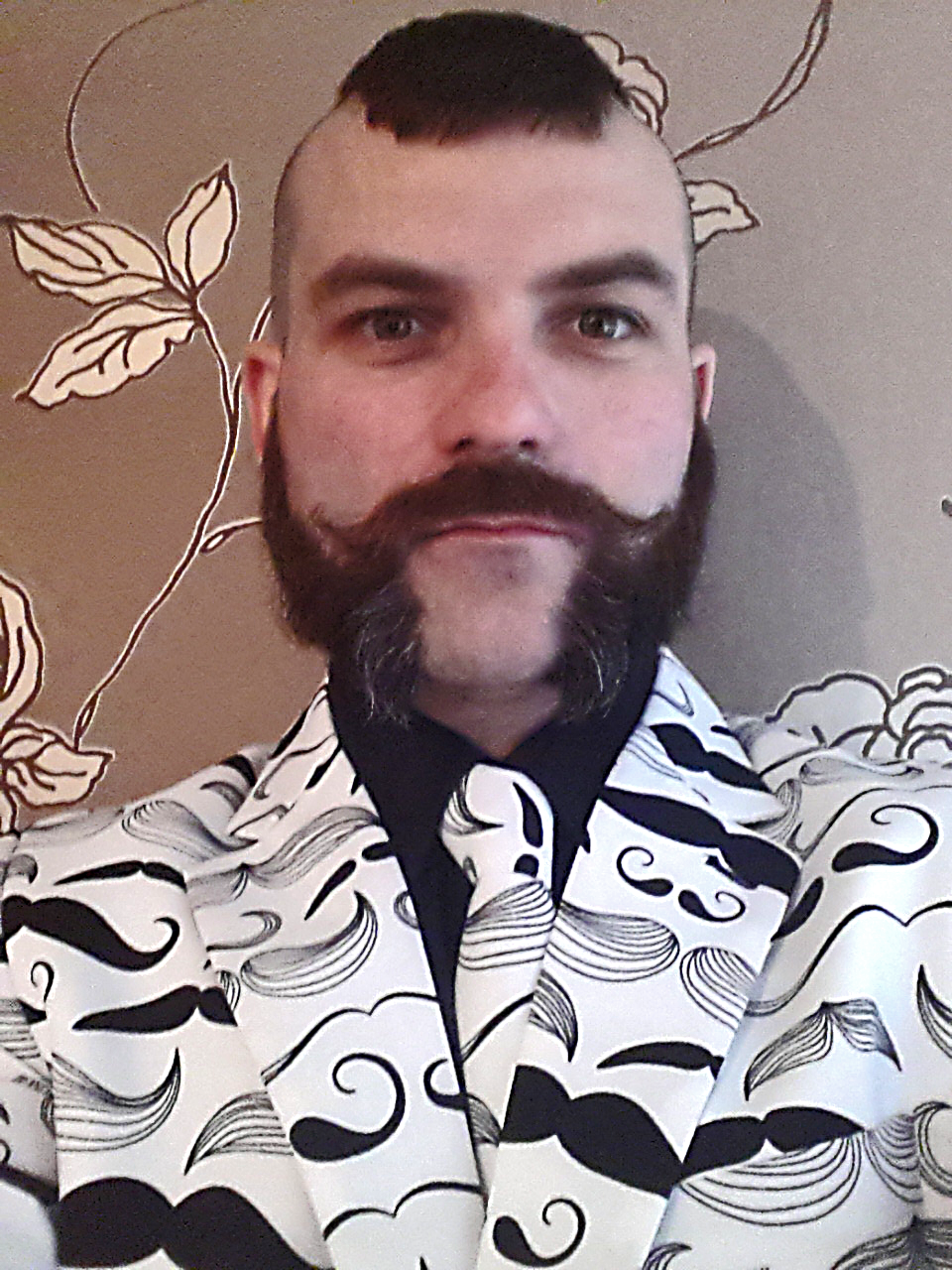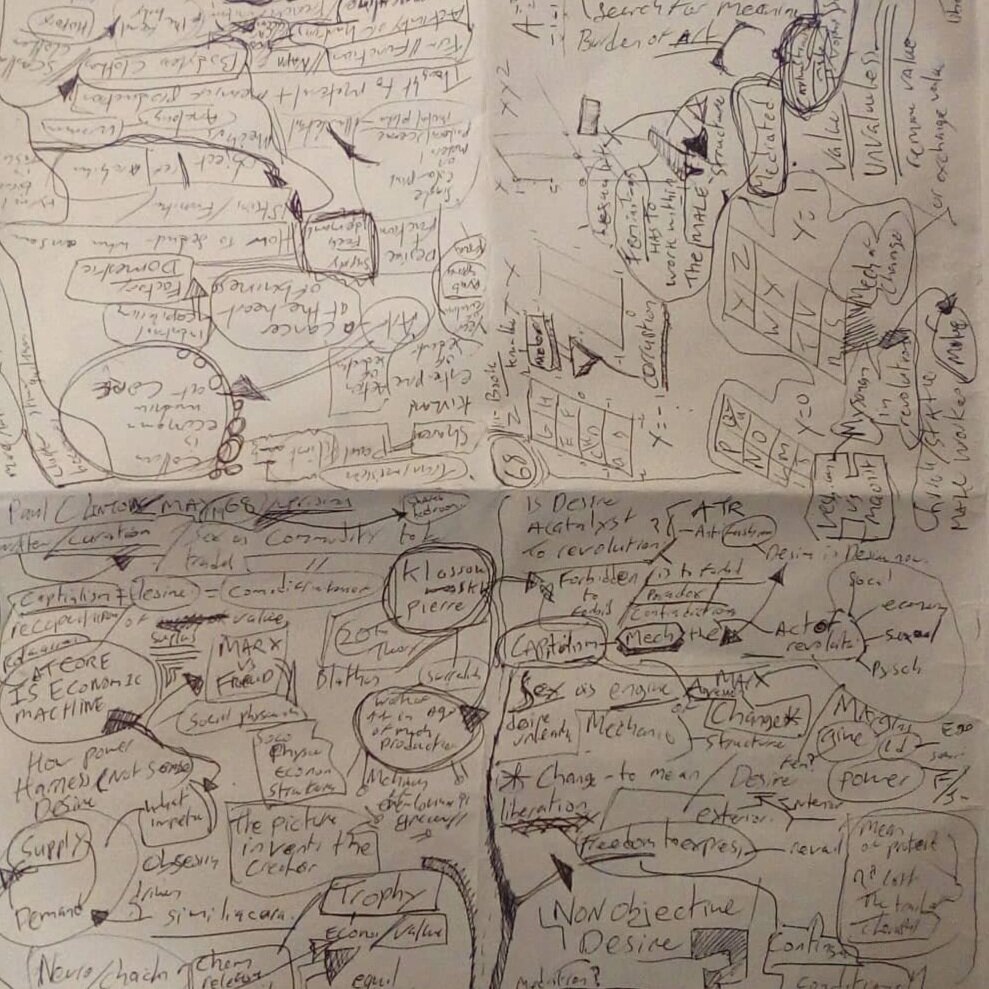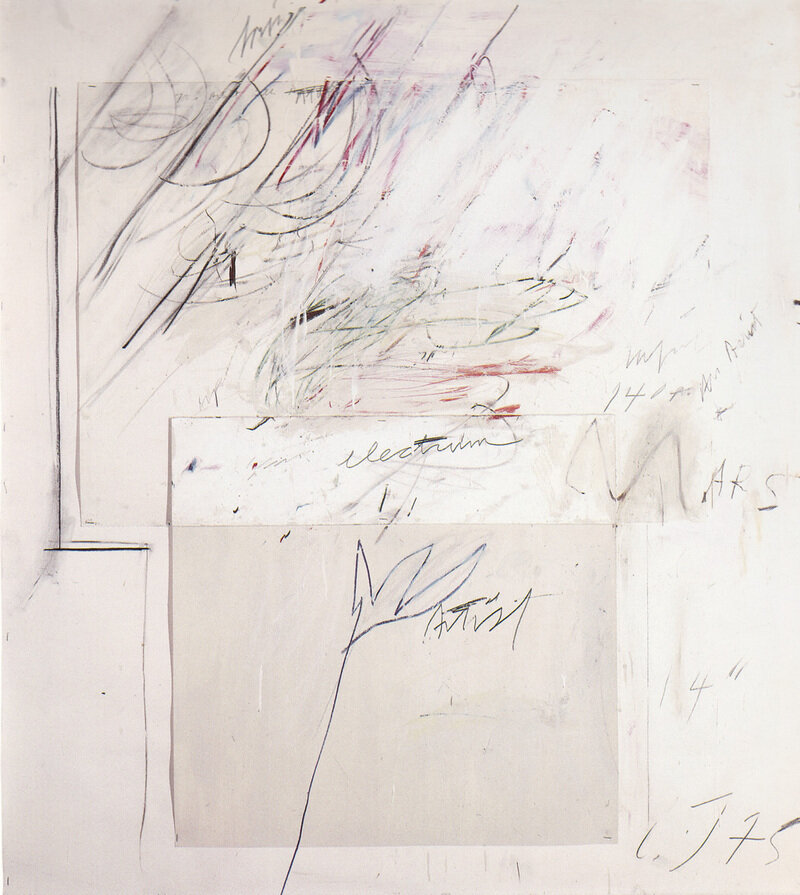Reviewing my larger scale work, and the performative aspect of my practice, I don’t want to follow a traditional performance-based route with the work. It is not about how I activate the space, more a desire to see how I physically use the space around the surfaces I work on. To reveal this gestures that are not recorded on the surface of a page. Flusser in ‘writing as gesture’ lists what he calls the ‘Bricks’ of writing, the essential elements for written communication. The surface, the stain, the tool that makes the stain and so on. In that vein I have started to conceptualise my own ‘bricks’ A surface as a thing we stain with our mark-making. Our mark-makings are our actions. Writing, drawing is not just the marks we make on the page, but also the gestures we perform in space to make the marks.
To begin exploring this idea I attached a camera to a pen I was using to retrace an earlier tracing. This was to try and capture the movements of the pen that are not recorded. Where the pen lifts off the surface and moves through space to descend and mark again. Like the story of the white and black fire inscribing or ‘onscribing’ as Flusser would have it meaning on the Torah, and the hidden text in the white fire. These motions are never seen performed when we read a text or look at a drawing, yet these movements are essential for communicating meaning. And contain yet another level of semiotic significance for me to explore. Upon watching the video, I became aware of the audio qualities of the pen ‘hissing’ across the surface of the tracing paper. This is something that I want to more consciously record and experiment with. It also has started me thinking about the sound of the words I recorded, their wave forms and how these occupy space. It is an area that I need to investigate more fully.
In summary I am now at the point where I need to review my work and pinpoint seams of inquiry to explore and more fully develop. To this end I have found this research module both very helpful and frustrating. In that it has helped focus my mind and thrown up lots of artistic distractions. I feel that the way forward for me is to follow the asemic writing aspect of my work, utilising a more intimate performance angle where I record the gestures of the pen on a micro scale and the gestures of my body on a macro scale, somehow combining this with and as of yet undeveloped concept of aural facets of the work.
[1] Rainer Crone; Joseph Leo Koerner, Paul Klee : legends of the sign, New York : Columbia University Press, ©1991.
[2] https://en.wikipedia.org/wiki/Asemic_writing accessed 30th April 2019
[3] Edited By Katy Macleod, Thinking Through Art Reflections on Art as Research, Publisher: Routledge, 2005 Art and Theoria, Nicholas Davies, p20 .
[4] Vilém Flusser The Gesture of Writing (PDF), http://www.flusserstudies.net/node/207
[5] Theodor W. Adorno, Aesthic theory, https://www.pdfdrive.com/aesthetic-theory-e18927250.html
[6] Rabbi Rami Shapiro, Kindling The Midrashic Imagination May 16, 2009, https://bethaverim.files.wordpress.com/2009/05/black-fire-on-white-fire.pdf
BIBLOGRAPHY
1 Rainer Crone; Joseph Leo Koerner, Paul Klee : legends of the sign, New York : Columbia University Press, ©1991
2 https://en.wikipedia.org/wiki/Asemic_writing accessed 30th April 2019
3 Edited By Katy Macleod, Thinking Through Art Reflections on Art as Research, Publisher: Routledge, 2005 Art and Theoria, Nicholas Davies, p20.
4Vilém Flusser The Gesture of Writing (PDF), http://www.flusserstudies.net/node/207
5 Theodor W. Adorno, Aesthic theory, https://www.pdfdrive.com/aesthetic-theory-e18927250.html
6 Rabbi Rami Shapiro, Kindling The Midrashic Imagination May 16, 2009, https://bethaverim.files.wordpress.com/2009/05/black-fire-on-white-fire.pdf


















